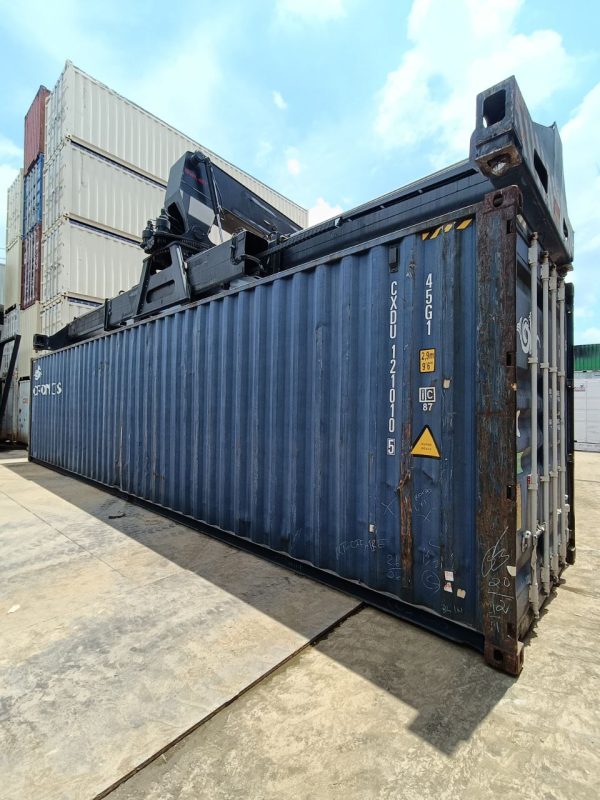Electricity and Plumbing Challenges in Container Offices: What You Need to Know

Container offices have become an increasingly popular solution for businesses seeking flexible, cost-effective, and sustainable workspaces. These repurposed shipping containers offer numerous advantages, such as mobility, durability, and a modern aesthetic. However, transforming a steel container into a fully functional office space requires careful consideration of certain challenges, particularly when it comes to electricity and plumbing. This article explores the key issues and provides essential insights for anyone considering a container office.
Electrical Challenges in Container Offices
- Power Supply and Load Management
One of the first considerations in setting up a container office is ensuring an adequate power supply. Shipping containers were not originally designed to house electrical systems, so retrofitting them with the necessary wiring, outlets, and lighting can be complex. It’s crucial to assess the power needs of your office equipment, including computers, printers, lighting, HVAC systems, and any other appliances. Overloading the electrical system can lead to frequent power outages, equipment damage, and potential fire hazards.
To mitigate these risks, it’s essential to work with a qualified electrician who can design a custom electrical plan that meets your specific needs. This plan should include proper load management strategies, such as installing circuit breakers, using energy-efficient appliances, and ensuring that the wiring is up to code.
- Insulation and Wiring Safety
Shipping containers are made of steel, which is an excellent conductor of electricity. This characteristic makes it imperative to insulate the container properly to prevent electrical hazards. Insulation not only helps regulate the temperature inside the container office but also protects the electrical wiring from coming into direct contact with the metal walls. This insulation must be installed correctly to avoid condensation build-up, which can lead to moisture-related issues like rust and short circuits.
In addition, all electrical wiring should be enclosed in conduit to protect it from damage and to meet safety regulations. This is particularly important in container offices that may be exposed to harsh weather conditions or heavy usage.
- Ventilation and HVAC Systems
Container offices often require HVAC systems to ensure a comfortable working environment. However, installing these systems in a metal container presents unique challenges. The HVAC unit must be appropriately sized for the space, and adequate ventilation must be provided to prevent overheating and ensure efficient operation. Electrical considerations for HVAC systems include ensuring the power supply can handle the additional load and integrating the system into the overall electrical plan.
Plumbing Challenges in Container Offices
- Water Supply and Drainage
One of the most significant plumbing challenges in container offices is establishing a reliable water supply and drainage system. Traditional buildings are connected to municipal water and sewage systems, but container offices may be located in areas without easy access to these utilities. As a result, alternative solutions, such as water tanks and septic systems, may be required.
The installation of these systems requires careful planning, as containers have limited space for plumbing infrastructure. It’s important to consider the placement of water inlets and outlets, as well as the slope needed for effective drainage. Additionally, plumbing lines should be insulated to prevent freezing in colder climates.
- Space Constraints
Space is at a premium in container offices, and this can complicate the installation of plumbing systems. The limited space may require creative solutions, such as compact fixtures, tankless water heaters, and flexible piping. Proper planning and design are crucial to ensure that all plumbing components fit within the confined space without compromising functionality.
- Waste Management
Managing waste in a container office can be challenging, especially if the office is located in a remote area. Depending on the location, you may need to install a septic system or connect to a portable waste tank. Regular maintenance and waste disposal are essential to prevent health hazards and ensure compliance with local regulations.
Best Practices for Overcoming These Challenges
- Engage Professionals Early On
Whether you’re dealing with electrical or plumbing challenges, engaging professionals early in the planning process is crucial. An experienced electrician and plumber can help you design systems that meet your needs while adhering to safety regulations and building codes.
- Consider Off-Grid Solutions
For container offices in remote locations, off-grid solutions such as solar power and rainwater harvesting can be effective ways to address electricity and plumbing challenges. These solutions can reduce reliance on external utilities and make your container office more sustainable.
- Regular Maintenance
Once your container office is up and running, regular maintenance is essential to keep the electrical and plumbing systems in good working order. This includes checking for signs of wear and tear, monitoring power usage, and ensuring that plumbing lines are clear and functioning properly.
Conclusion
While container offices offer numerous benefits, they also come with unique challenges, particularly in the areas of electricity and plumbing. By understanding these challenges and taking proactive steps to address them, you can ensure that your container office is safe, functional, and comfortable. Whether you’re converting a single container or designing a multi-container complex, careful planning and professional guidance are key to overcoming these obstacles and making the most of this innovative workspace solution.
 Singapore
Singapore Australia
Australia Indonesia
Indonesia Japan
Japan Malaysia
Malaysia New Zealand
New Zealand Philippines
Philippines South Korea
South Korea Taiwan
Taiwan Thailand
Thailand VIETNAM
VIETNAM
